Discover React Universe On Air
React Universe On Air

React Universe On Air
Author: Callstack
Subscribed: 66Played: 1,202Subscribe
Share
© All rights reserved
Description
React Universe On Air is your go-to podcast about building cross-platform apps with React and React Native, featuring practical lessons, forward-looking ideas, and talks with industry leaders.
84 Episodes
Reverse
The NFL runs on tight deadlines. Every kickoff and Super Bowl demands that millions of fans get flawless live video, stats, and fantasy features, whether they’re on iPhones, Xboxes, or connected TVs.
In this episode of React Universe On Air, Mike Grabowski talks with Michael Blanchard (Director of Engineering at the NFL), about how React Native became the backbone of this high-pressure, multi-platform ecosystem.
Michael shares his journey from web engineer to leading NFL’s engineering teams across nfl.com, three mobile apps, a cross-platform video player, and a suite of connected TV apps. Together with Mike, he explores the NFL’s migration strategy, the transition from Haul/Webpack to Metro and Expo, and the cultural shifts that helped merge web and native engineers into one collaborative team.
You’ll learn:
➡️ Why the NFL went full Greenfield (twice)
➡️ How NFL+ shaped their second rewrite
➡️ Lessons from moving from Haul/Webpack to Metro
➡️ How Expo SDKs gradually replaced community libraries
➡️ How GitHub Actions + EAS Build reshaped their CI/CD pipeline
➡️ Strategies for handling 20–30 PRs daily in a monorepo
➡️ How React Native powers mobile, web, and multiple connected TVs
➡️ What cultural shifts enabled true cross-platform collaboration
Catch more React Universe On Air episodes 🎧 https://clstk.com/4gp8Cw5
Sign up for our newsletter ✉️ https://clstk.com/4mfmRof
Follow us on X 🐦 https://x.com/callstackio
Chapters:
00:00 Welcome to the React Universe
01:35 Meet Michael Blanchard from NFL
03:03 NFL's digital presence and platforms
04:24 React Native in NFL's mobile apps
08:32 How React spread across all platforms
11:47 Collaboration between web and native teams
18:11 Technical decisions regarding different platforms
23:48 V2 of NFL's flagship app
25:14 Choosing migration strategy
30:10 Maintaining more product versions
34:33 Adopting Expo
42:10 Modernizing CI/CD
46:48 Team structure and workflow at NFL
53:29 Final thoughts
What really happens when React Native’s core contributors gather behind closed doors?
In this episode of React Universe On Air, recorded live at React Universe Conf 2025, host Łukasz Chludziński sits down with Joel Arvidsson, Jay Meistrich, and Thibault Malbranche to unpack the hottest debates and wisest insights from the Core Contributor Summit.
They dive into:
➡️ How the cooperation between consultancies, big organizations like Meta or Microsoft, and OSS contributors looks like
➡️ 2025 as the “year of stability” for React Native
➡️ The promise (and pain) of React Native for desktop apps
➡️ Flipper’s decline and new community-driven DevTools
➡️ Whether React Native 1.0 is just a marketing label or a true milestone
➡️ How agencies and individuals balance open source with client work
➡️ Practical advice for engineers who want to contribute and join the conversation
Chapters:
00:00 Welcome to the React Universe
01:21 Meet our guests: Thibault Malbranche, Joel Arvidsson, Jay Meistrich
02:33 What is Core Contributor Summit
04:02 Meta vs. community usage of React Native
07:19 Year of stability & tooling challenges
09:00 Surprise session: React Native for Desktop
16:10 Concrete outcomes vs. planting seeds
21:02 Open Source dynamics & collaboration
27:30 React Native 1.0
33:45 Future directions & getting involved
36:50 Final thoughts
Catch more React Universe On Air episodes 🎧 https://clstk.com/423vF9D
Sign up for our newsletter ✉️ https://clstk.com/3Kb23kM
Follow us on X 🐦 https://x.com/callstackio
Many React Native apps ship without full observability. The result? Blind spots in performance, crashes, and user behavior once your app is in the wild.
In this episode of React Universe On Air, Łukasz Chludziński sits down with Jonathan Munz (Senior Software Engineer at Embrace) and Adam Horodyski (React Native Expert at Callstack) to unpack how OpenTelemetry can bring structure and clarity to mobile monitoring.
They break down why mobile observability is harder than observability on backend, what the OTLP protocol enables, and how to instrument React Native apps without locking into a single vendor. You’ll also hear how community-driven tooling like React Native OpenTelemetry and the Embrace React Native SDK can simplify setup and improve data portability.
You’ll learn:
➡️ How observability and OpenTelemetry work together
➡️ The 3 core OpenTelemetry signal types for mobile
➡️ Why mobile instrumentation is more complex than backend telemetry
➡️ How OTLP improves interoperability between tools
➡️ Where auto-instrumentation is still missing in React Native
➡️ The role of Embrace and open-source libraries in reducing setup overhead
Check out episode resources on our website 📚 https://clstk.com/4104nAF
Catch more React Universe On Air episodes 🎧 https://clstk.com/45EWnYe
Monitor what matters in your React Native app with Callstack’s help 🤝 https://clstk.com/3HoM3KI
Sign up for our newsletter ✉️ https://www.callstack.com/newsletter
Follow us on X 🐦 https://x.com/callstackio
Chapters
00:00 Welcome to the React Universe
01:07 Meet our guests
03:07 Defining observability and OpenTelemetry
04:32 Signals in observability
11:57 Challenges with observability in React & React Native
16:04 Standardization and OpenTelemetry protocol
18:08 Embrace and Open Telemetry
21:29 Future of OpenTelemetry in mobile
27:23 Exploring React Native OpenTelemetry
29:54 Community involvement in OpenTelemetry
37:34 Real observability in React Native
46:41 Future of React Native observability
50:40 Hey, listeners, here’s what we want you to do
54:46 Conclusion and final thoughts
Should you be afraid of monorepos? Not with Nx. Tune in and learn how to scale apps without scaling pain.
In this episode of React Universe On Air, Łukasz Chludziński chats with Jordan Powell from Nx to explore what it really takes to build and manage a monorepo at scale. From dependency graphs to distributed CI tasks, they break down how Nx helps teams stay fast, focused, and frustration-free. Whether you're just getting started with Yarn Workspaces or running into CI bottlenecks, this episode gives you the strategies and context to go further with less overhead.
Key learnings
➡️ The difference between monorepos and monoliths
➡️ How Nx graphs improve selective builds and testing
➡️ What “ownership rules” mean for large codebases
➡️ How distributed task execution saves time in CI
➡️ Why better DX equals better business outcomes
➡️ Real-world patterns for React Native and full-stack monorepos
Catch more React Universe On Air episodes 🎧 https://clstk.com/44Bj51X
Get your React Universe Conf 2025 tickets 🎟 https://clstk.com/4nFqTZ1
Sign up for our newsletter ✉️ https://clstk.com/3TrnIGH
Follow us on X 🐦 https://x.com/callstacki
00:00 Welcome to the React Universe
00:42 Meet Jordan Powell from Nx
02:42 The joy and pain of testing
04:03 Understanding monorepos
06:52 The origins of Nx
09:41 Developer experience and its business impact
12:10 Nx vs. other tooling and a closer look at its features
21:07 Getting started with Nx
25:27 Collaborating on projects
28:00 Assigning ownership and scoping projects
29:30 Managing dependencies in a monorepo
31:16 Handling multiple framework versions and migrations
32:40 Real-world examples of large-scale monorepos
36:10 Distributed task execution with Nx Cloud
39:08 Efficient testing in a monorepo
42:55 The Future of Nx with AI integration
47:27 Conclusion and final thoughts
What if you could skip most native builds—and still ship confidently? In this episode of React Universe On Air, we explore how the React Native Enterprise Framework (RNEF) helps large teams dramatically reduce build times and streamline development at scale.
Our guest Michał Pierzchała, Principal Engineer at Callstack, shares how RNEF was built to solve real-world bottlenecks in enterprise React Native projects. Alongside him, Łukasz Chludziński discusses his experience testing the framework in a live production environment, where build times dropped from 35 minutes to just 3.
What you'll learn:
- How RNEF slashes native build times with CI-based caching
- Ways to adopt the framework incrementally—no full rewrite required
- How brownfield support lets you drop React Native into native apps easily
- What makes RNEF different from Expo and Community CLI
- Real-world savings and improved developer-QA workflows
Check out episode resources on our website 📚 https://clstk.com/4e5OL3W
Explore React Native Enterprise Framework ✨ https://clstk.com/4kAt7ap
Catch more React Universe On Air episodes 🎧 https://clstk.com/3SJRk1G
Get 20x faster builds on your CI in less than a week with our help 👉 https://clstk.com/3ZWJ9Tq
Sign up for our New York meetup in June 2025 👉 https://clstk.com/4kEyG7C
Follow us on X 🐦 https://x.com/callstackio
00:00 Welcome to the React Universe
01:07 Host & guest introductions
02:40 Project overview: React Native Enterprise Framework
04:04 Challenges in large repositories
04:50 Testing and build time optimization
07:31 Building RNEF on a real-life use case
12:37 Integrating RNEF POC to the project
15:00 Incremental adoption mindset
21:42 What it all has to do with React Native Community CLI
26:05 Optimizing build process with smart caching
44:06 Seamless collaboration between devs & QA
47:28 Brownfield projects with RNEF
55:50 Where RNEF stands in the ecosystem
59:08 What does it mean to be a React Native framework?
Is rewriting your native app really the only way to go cross-platform?
In this Coffee Talk episode, we explore how React Native Brownfield offers a smarter path forward.
Łukasz Chludziński invites Oskar Kwaśniewski and Burak Güner—who work directly on React Native Core and brownfield tooling—to discuss how recent advances in React Native have made brownfield integration far more viable, stable, and scalable.
You’ll learn:
➡️ Why brownfield isn’t what it used to be (goodbye, brittle bridging)
➡️ How `RootViewFactory` and `ReactNativeFactory` APIs simplify setup
➡️ What’s new in React Native Brownfield 1.0.0
➡️ How to keep your architecture clean while integrating React Native
➡️ What this means for modern native stacks like SwiftUI, Jetpack Compose—and future-facing platforms like visionOS
Whether you’re maintaining a legacy app or building for what's next, this episode gives you a blueprint for hybrid success.
Explore React Native Brownfield 🙌 https://github.com/callstack/react-native-brownfield
Check out episode resources on our website 📚 https://bit.ly/3ESW3Lf
Catch more React Universe On Air episodes 🎧 https://bit.ly/44A0q8q
Get your React Universe Conf 2025 tickets 🎟 https://hubs.li/Q03l-47N0
Sign up for our newsletter ✉️ https://bit.ly/3H2xsE6
Follow us on X 🐦 https://x.com/callstackio
Timestamps
00:00 Welcome to the React Universe
02:00 Meet our guests: Oskar & Burak
02:50 Let’s talk brownfield app development
03:37 Craziest brownfield setups our guests have seen
08:19 Greenfield vs. brownfield React Native
14:14 How we used to approach brownfield development
18:20 Callstack’s React Native Brownfield
23:30 RootView Factory & React Native Factory
28:50 New Features in React Native Brownfield 1.0
35:35 Sharing data between native and JavaScript
41:00 How about using different React Native versions
43:30 Cost of complexity
47:00 Learn more and get in touch with our guests
Tanner Linsley joins React Universe On Air to unpack the evolution of the TanStack ecosystem—from React Table and React Query to TanStack Router and the newest addition to the family, TanStack Start ✨
What started as internal tooling for Nozzle became a suite of libraries that shaped how developers think about server state, routing, and full-stack React apps. In this episode, Tanner shares the technical decisions behind building framework-agnostic, headless tools—and explains why client-side architecture still matters in a server-first world.
You’ll also hear why TanStack Start isn’t just another full-stack framework, how React Server Components could be treated like server state, and what’s coming next for TanStack Router.
If you're building React apps at scale or deciding how to modernize your frontend stack, don’t skip this one!
Check out episode resources on our website 🧠 https://bit.ly/41Z876l
Check out other episodes of our podcast 🎧 https://bit.ly/3XIHBeU
Get your React Universe Conf 2025 tickets 🎟 https://hubs.li/Q03g5cLM0
Sign up for Callstack newsletter ✉️ https://bit.ly/4lwS7QP
Follow us on X 🐦 https://twitter.com/callstackio
Chapters
00:00 Welcome to the React Universe
00:00 Introduction to Open Source and Server State
01:15 Meet our guest: Tanner Linsley
02:19 How Tanner got into programming
04:06 Early programming days when there was no React yet
05:41 Cross-platform beginnings
07:40 Open Source contributions
09:24 Working on Chart.js
14:12 React Table at Nozzle
16:58 How React Static started
20:53 React Query taking shape
27:53 Community reactions to React Query
33:18 Framework agnostic approach
36:26 Cross-platform frameworks comparison
37:56 Headless, type safety, and no dependencies
46:22 TanStack Router
01:00:59 TanStack Start
01:11:06 React Server Components
01:18:51 Wrap-up
01:20:29 React Universe Conf Speakers Announcement
Ever wondered why TypeScript works so well with JavaScript libraries? It’s thanks to Definitely Typed, a project that helps developers use these libraries with type safety and autocompletion 🚀
In this Coffee Talk episode of React Universe On Air, Mike Grabowski https://x.com/grabbou chats with Boris Yankov https://x.com/borisyankov, the creator and maintainer of Definitely Typed, to uncover its story 📚
🟣 TypeScript's Beginnings: Boris revisits 2012, discussing initial challenges and contributions
🟣 Growth to Open Source Giant: From a personal project to a community powerhouse, aided by Microsoft
🟣 TypeScript vs. Flow: Discover why TypeScript thrived with robust type definitions
🟣 Functionality: How Definitely Typed integrates with NPM and TypeScript tooling
🟣 Open-Source Dynamics: Insights into collaboration without strict leadership
🟣 Top TypeScript Features: Boris and Mike's favorites, plus development tips
Now, let’s hear from you! Have you ever contributed to Definitely Typed? If so, what library did you add types for and what challenges did you face? Share your experience to inspire new contributors! 🚀
Check out episode resources on our website 🧠 https://bit.ly/4jdRoSD
Check out other episodes of our podcast 🎧 https://bit.ly/4hzoScR
Get your React Universe Conf 2025 tickets 🎟 https://hubs.li/Q03d4Hll0
Sign up for Callstack newsletter ✉️ https://bit.ly/4iVScLz
Follow us on X 🐦 https://twitter.com/callstackio
Eighteen TV platforms, one codebase—what could possibly go wrong? Tune in to find out how to tackle the technical and UX challenges of building for Android TV, Apple TV, Fire TV, Tizen, and more—all with React Native!
In the 49th episode of React Universe On Air, Łukasz Chludziński (https://x.com/lukasz_app) teams up with Michael Khirallah (https://x.com/mkralla11), Senior Director of Engineering at DIRECTV, and Chris Trag (https://x.com/chris_trag), Developer Evangelist at Amazon, to discuss why cross-platform development is not just a time-saver but also a way to deliver a consistent user experience.
You know that at Callstack, we’re all about performance—and with devices like Samsung’s Tizen TVs released in 2017 (running Chromium 47!), performance is a serious concern. That’s why we asked our guests to share real-world techniques for optimizing TV apps, from architectural choices to strategies that avoid unnecessary performance hits on newer devices.
The complexity of TV app development doesn’t stop at coding, though. Our host and guests know it all to well, so they couldn’t help but discuss how they balance unit, integration, automation, and manual testing, leveraging tools like AWS Device Farm and custom-built frameworks to ensure stability across all supported platforms. What’s in it for you? Tips on automating QA without compromising thoroughness and why manual testing remains crucial for end-user experience.
Want to get started with React Native TV app development? Download our guide 📖https://hubs.li/Q038xx4l0
Check out episode resources on our website 🧠 https://hubs.li/Q038xx3k0
Check out other episodes of our podcast 🎧 https://hubs.li/Q038kRpf0
Become a speaker at React Universe Conf 2025 🎟 https://sessionize.com/react-universe-conf-2025/
Sign up for Callstack newsletters ✉️ https://hubs.li/Q038kRnp0
Follow us on X 🐦 https://twitter.com/callstackio
Reanimated 4 is here to change the way we build animations in React Native. With CSS-style animations and transitions, animations are now easier to write, more predictable, and work more like they do on the web.
In this episode, Ola Desmurs-Linczewska (https://x.com/p_syche_) sits down with Tomasz Zawadzki (https://x.com/tomekzaw_) and Mateusz Łopaciński (https://x.com/MatiPl01) from Software Mansion to discuss what’s new in Reanimated 4, why React Native is moving toward web standards, and what these changes mean for developers.
We talk about:
💜 Why Reanimated 4?—the motivation behind CSS-based animations and what problems they solve.
💜 How CSS animations & transitions work in React Native—use the syntax you already know!
💜 New Architecture-only support—why the old architecture is gone and what it means for migration.
💜 Aligning React Native with web standards—how Meta and the community are making React Native more like the web.
💜 Modularity and the future of Reanimated—splitting the library into smaller packages for better maintainability.
💜 Migration tips and developer experiments—how to upgrade, test new features, and start using CSS animations today.
Reanimated 4 is in beta now, so experiment with it and share your impressions in the comments!
Check out episode resources on our website 🧠 https://hubs.li/Q036Kc1k0
Share your feedback on this episode ✨ https://bit.ly/fdbck48
Become a speaker at React Universe Conf 2025 🎟 https://sessionize.com/react-universe-conf-2025/
Check out other episodes of our podcast 🎧 https://hubs.li/Q036KbNK0
Sign up for Callstack newsletters ✉️ https://hubs.li/Q036KbNW0
Follow us on X 🐦 https://twitter.com/callstackio
Picture this: your teams are innovating independently, deploying updates swiftly, and navigating complex app architectures with ease. Microfrontends make this possible, much like microservices revolutionized backend development. But what about mobile? How can this approach transform your app development strategy?
To explore these questions, we’re joined by Zack Chapple (https://x.com/Zackary_Chapple ), Co-founder and CEO of Zephyr Cloud, and Jakub Romańczyk (https://x.com/_jbroma ), maintainer of Re.Pack at Callstack. They dive into the evolution of microfrontends, starting with the fundamentals: what they are, why they matter, and how technologies like Module Federation enable them. Zack shares insights on tools like Webpack, Rspack, and Zephyr Cloud, showing how they streamline managing complex frontends.
The episode then shifts focus to mobile, where Zack and Jakub break down the Zephyr Cloud and Re.Pack collaboration. Learn how to tackle platform-specific challenges like managing version compatibility, over-the-air updates, and reducing bundle sizes—all while staying app store compliant. Plus, hear about real-world scenarios, like dynamically loading features or ejecting unused code to optimize performance, and get a sneak peek at Re.Pack 5.
Check out episode resources on our website 🧠 https://hubs.li/Q034233Q0
Check out other episodes of our podcast 🎧 https://hubs.li/Q034237L0
Get your React Universe Conf 2025 tickets 🎟 https://hubs.li/Q03423Hs0
Sign up for Callstack newsletters ✉️ https://hubs.li/Q034235v0
Follow us on X 🐦 https://twitter.com/callstackio
In 2020, Shopify decided to switch to React Native for both new and existing apps. In November 2024, the migration of their mobile app was officially over, resulting in a remarkable 86% unification of code across platforms and a streamlined development process that stems from eliminating 1.8 million lines of redundant code, reducing build times, and achieving seamless feature parity between iOS and Android.
Let’s take a closer look at the decision-making process involved in this transformation with Mike Grabowski (@grabbou at X) as our host and Mustafa Ali (@mustafa01ali at X), Shopify's Director of Engineering, as his guest.
Learn about the motivations for this change, such as reducing duplicated efforts and enabling seamless developer collaboration across web and mobile, the challenges faced, particularly in optimizing performance for their high-usage point-of-sale app, and the essential role of native developers in ensuring exceptional app performance and user experience.
Check out episode resources on our website 🧠 https://hubs.li/Q031_HNC0
Download free React Native Migration Guide 📖 https://hubs.li/Q031_Hxy0
Share your feedback on this episode ✨ https://bit.ly/feedback46
Get your React Universe Conf 2025 tickets 🎟 https://hubs.li/Q030Y5mp0
Check out other episodes of our podcast 🎧 https://hubs.li/Q031_Qmf0
Follow us on X 🐦 https://twitter.com/callstackio
In this episode, we’re taking a closer look at two solutions that can redefine how we
build universal React Native apps: DOM Components and React Server Components. They promise faster and better development—think low-latency interactions, offline capabilities, and the flexibility to scale effortlessly. If you're looking to future-proof your team's workflow and deliver apps that delight users regardless of the platform, this is a must-listen.
To discuss DOM & React Server Components in detail, Łukasz invited Evan Bacon, the creator of Expo Router and Engineering Manager at Expo. Throughout the episode, Evan shares his expertise and journey in creating tools like DOM Components, which enable developers to integrate web code seamlessly into React Native apps, and React Server Components, simplifying server-driven rendering for mobile applications.
Check out episode resources on our website 🧠 https://hubs.li/Q030XWL_0
Share your feedback on this episode ✨ https://bit.ly/fdbck45
Get your React Universe Conf 2025 tickets 🎟 https://hubs.li/Q030XWT40
Check out other episodes of our podcast 🎧 https://hubs.li/Q030XWMz0
Sign up for Callstack newsletters ✉️ https://hubs.li/Q030XWLD0
Follow us on X 🐦 https://twitter.com/callstackio
React Native FastIO: Nitro-Powered Performance Boost | React Universe On Air: Coffee Talk #25 by Callstack
In this episode of the React Universe On Air podcast, Ola has invited Krzysztof Magiera,
the Director of Engineering at Software Mansion, to talk about Radon IDE and why it can be considered a game-changer for React Native developers. Their conversation revolves around:
➡️ the challenges of the available React Native tooling,
➡️ what made Krzysztof start working on Radon IDE,
➡️ how community feedback contributed to what the tool is today,
➡️ the key features of Radon IDE, and how they improve developer velocity and productivity.
Check out episode resources on our website 🧠 https://hubs.li/Q02ZVm8Z0
Share your feedback on this episode ✨ https://bit.ly/ep44feedback
Check out other episodes of our podcast 🎧 https://hubs.li/Q02ZVm030
Sign up for Callstack newsletters ✉️ https://hubs.li/Q02ZVm040
Follow us on Twitter 🐦 https://twitter.com/callstackio
In this episode, Kuba is joined by Kewin, a member of Callstack’s AI team at the R&D Department and the co-creator of Cassandra. Together, they talk about everything you need to know about building a custom AI assistant, from why we chose OpenAI’s ChatGPT to the challenges faced and solutions devised to craft a functional and efficient internal chatbot. They also share some interesting insights about the considerations for performance and security, as well as the future of AI in workplace management.
Check out episode resources on our website 🧠 https://hubs.li/Q02Yv4ZK0
Share your feedback on this episode ✨ https://bit.ly/ct24feedback
Let us know what you think of Callstack 📄 https://hubs.li/Q02Zjv9X0
Check out other episodes of our podcast 🎧 https://hubs.li/Q02ZjQH80
Sign up for Callstack newsletters ✉️ https://hubs.li/Q02Yv4XJ0
Follow us on Twitter 🐦 https://twitter.com/callstackio
Grab your coffee, sit back, and tune in to the 23rd Coffee Talk episode, where we break down Next.js 15 and the updates it brings to the table. This time, Ola and Łukasz are joined by Szymon Chmal, and together, they spill the beans on React 19 support, caching, Turbopack, Server Actions security, and more!
Check out episode resources on our website 🧠 https://hubs.li/Q02WX9fc0
Share your feedback on this episode ✨ https://bit.ly/ct23feedback
Check out other episodes of our podcast 🎧 https://hubs.li/Q02WX6NP0
Sign up to receive curated content for tech leaders and developers ✉️ https://hubs.li/Q02WX6_x0
Follow us on Twitter 🐦 https://twitter.com/callstackio
What is this, a crossover episode? You bet! React Universe On Air is joining forces with React Native Radio once again to help you navigate App Center’s retirement.
In March 2024, Microsoft announced the sunset of App Center in 12 months. Bearing in mind how big of a deal CodePush is for React Native applications, it’s a radical change for developers and businesses alike. We’re releasing this episode six months before it actually takes place because it’s high time you started planning migration (if you haven’t already).
In this episode, we discuss the impact of App Center's sunsetting on businesses, explore the best alternatives, and provide actionable insights on how to prepare for the transition. And since our focus is the React Native ecosystem, Łukasz Chludziński and Mazen Chami invited a very special guest: Quinlan Jung from Expo. Together, they talk about:
💜 the meaning of App Center retirement
💜 community reception of this piece of news
💜 most frequently used App Center’s functionalities and their replacements
💜 how Expo Application Services fit the picture
💜 migration tips for businesses, especially enterprises
Check out episode resources on our website 🧠 https://hubs.li/Q02Vr44t0
Share your feedback on this episode ✨ https://bit.ly/ep43feedback
Check out other episodes of our podcast 🎧 https://hubs.li/Q02VgpsK0
Sign up to receive curated content for tech leaders and developers ✉️ https://hubs.li/Q02Vgpsd0
Follow us on Twitter 🐦 https://twitter.com/callstackio
Fasten your seatbelts, and get ready to learn about Nitro Modules straight from its creator, Marc Rousavy!
On September 13, Marc released Nitro Modules to the public. If you haven’t heard about it yet, it’s high time caught up, because it’s a framework for creating fast native modules that significantly outperform Turbo and Expo Modules, making your React Native app even faster!
Tune in to the episode to learn about:
💜 what led to the creation of Nitro Modules
💜 technical details and benefits of Nitro Modules
💜 performance comparison with Turbo Modules and Expo Modules
💜 behind the scened of Nitro Modules development
💜 starting a new project and migrating an old one to Nitro Modules
💜 developer experience and plans for the future
Share your feedback on this episode ✨ https://bit.ly/coffeetalk22feedback
Check out episode resources on our website 🧠 https://hubs.li/Q02Tps_l0
Check out other episodes of our podcast 🎧 https://hubs.li/Q02T28BP0
Sign up to receive curated content for tech leaders and developers ✉️ https://hubs.li/Q02T282n0
Follow us on Twitter 🐦 https://twitter.com/callstackio
Why settle for flat graphics, when you can see the React Universe in 3D? In this Coffee Talk, Jakub invited three very special guests to dig deep into the topic of 3D rendering in React and React Native:
💜 Chris Baumgartner - Maintainer at Poimandres Dev Collective
💜 Cody Bennett - Graphics Engineer at Encube
💜 Mario Pasiński - Callstak’s developer involved in bringing 3D rendering to React Native VisionOS
In their discussion, Jakub and his guests discuss the role of 3D in modern applications (going beyond games) and how this specific ecosystem is evolving. They also share practical tips for developers looking to incorporate 3D elements into their applications, from answering the question of whether you actually need to be good at math to do 3D to covering key libraries like React Three Fiber, Three.js, or Babylon.js. You can also expect a deep dive into what WebGPU and WebGL have to offer now, as well as what the future will bring for them and the entire 3D realm.
Share your feedback on this episode ✨ https://bit.ly/ct21feedback
Check out episode resources on our website 🧠 https://hubs.li/Q02R2fx00
Check out other episodes of our podcast 🎧 https://hubs.li/Q02Q4nGH0
Sign up to receive curated content for tech leaders and developers ✉️ https://hubs.li/Q02Q4nGQ0
Follow us on Twitter 🐦 https://twitter.com/callstackio





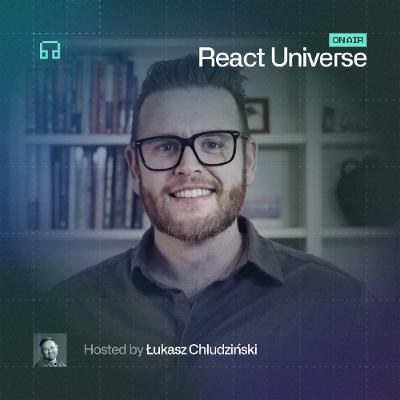

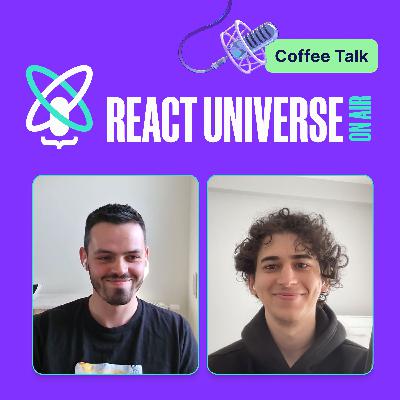
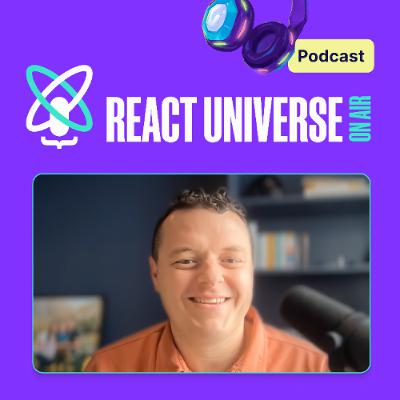


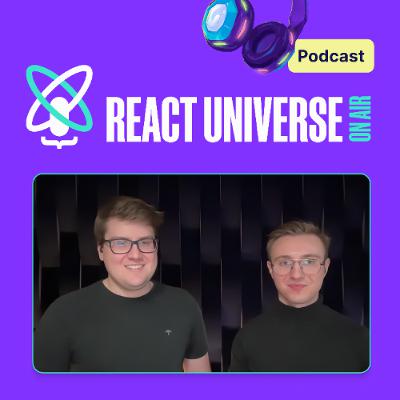
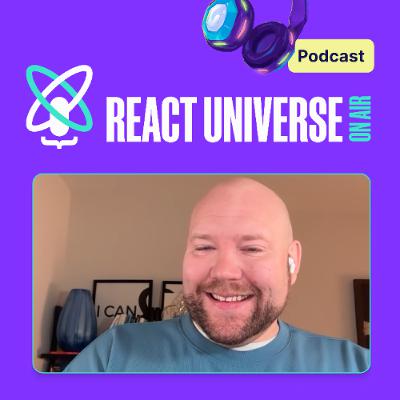

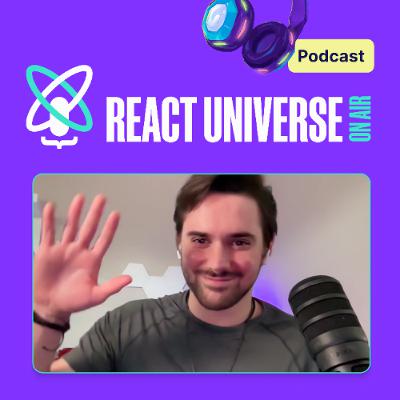
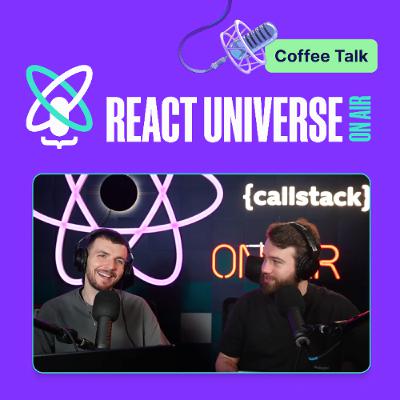
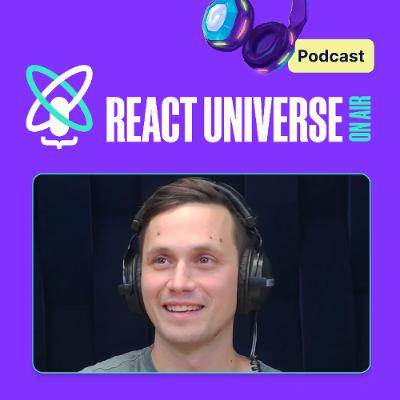


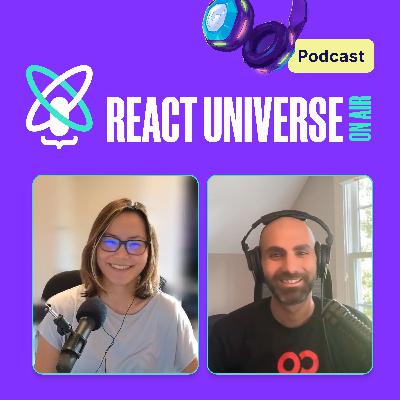
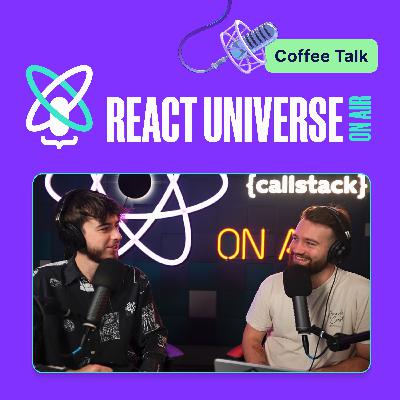




React Native is mostly based on JavaScript, a website development technology. So, developers who work on JavaScript https://anyforsoft.com/technology/react-native/ can easily develop mobile apps using React Native. This not only saves time but also eliminates the need for developers to learn complex languages like Objective-C and Java to develop an app. All in all, React Native mobile app development framework is a win-win for businesses when it comes to saving time, effort, and money. It has great rendering abilities and uses a component-based approach which makes it easy to create both simple and complex UI designs.
React Native is a popular open source mobile application development framework created by Facebook. It uses JavaScript to create cross-platform mobile applications with true native capabilities. This means you can develop natively-rendered mobile apps for both iOS and Android simultaneously using a single codebase.